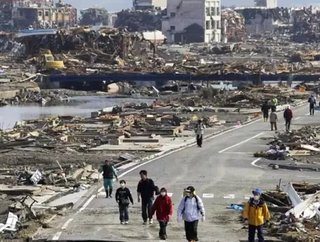Why the Japan Disaster can help Supply Chains

Before reading this feature, be sure to check this story and others in June's issue of our digital magazine. Trust us, it's way cooler!
To borrow a phrase from the movie Armageddon, the Japan disasters have the global supply chain exhibiting the behavior from the worst parts of the Bible.
Despite all of this, however, one supply chain expert thinks the effects will be felt for a relatively short period of time.
“(The disaster) has been hugely disruptive from a matter of weeks and months, but I don’t think it’s going to be disruptive in terms of quarters and years,” Joe Lawler, CEO of supply chain solutions leader ModusLink, said.
“If you’d seen this happen a quarter or two later, there might have been much bigger problems with companies getting ready for the fall cycle.”
ModusLink has a branch in Tokyo, and Lawler said that “our people on the ground there have seen (the supply chain) hugely disrupted.”
According to a study by Dun & Bradstreet’s report on the preliminary implications for the three major prefectures affected, over $200 billion in sales volume is potentially impacted by the earthquake and subsequent tsunami.
Automobile and electronics manufacturers have seen shockwaves sent through their supply chain as companies scramble to find alternative sources for their parts.
WHY THE JAPANESE DISASTER WILL HELP THE SUPPLY CHAIN
But could the Japan disasters actually help the global supply chain? According to Lawler, the disaster is forcing companies to more aggressively seek supply chain solutions.
“I think this whole thing will be more positive than negative,” Lawler said. “In the long run, people will get better at developing their risk plans and disaster plans to make sure they have suppliers who will be able to flex throughout certain regions.”
Lawler thinks planning goes a long way to managing risk within your supply chain, and a good lawyer can help you and your company prepare for the worst possible scenarios.
“We certainly rely on lawyers to anticipate some of the worst-case scenarios that supply chains need to anticipate,” Lawler said. “As a technology industry, you need to spend more time on going over what we’re witnessing now, and that’s why things like the tsunami can actually help the industry in the long run.”
Lawler also relies heavily on ModusLink’s optimization modeling tools, which basically comprises system of finding the most efficient way to get a product to market. The modeling tools take into account costs associated with labor, freight, customs and handling times, among other things.
ModusLink’s optimization modeling tools also enable the company to play around with different types of hypotheticals.
“We take great pride in what we call optimization modeling tools. They enable us to play around with disaster scenarios,” Lawler said. “If a facility goes down, what will be our backup plan?
According to Lawler, ModusLink has systems in place to actually see how a company’s supply chain can flex, region to region. This feature allows companies to see exactly what would happen should disaster strike, and allows businesses to go through some of the scenarios.
“That’s what we call our disaster recovery plan,” Lawler said.
WHAT SUPPLY CHAINS NEED TO DO TO PREPARE
So what actions can you take with your supply chain to make sure you’re adequately prepared to handle the risks that go with the industry?
According to Lawler, the key to managing supply chain risk starts with having more than one supplier.
“Dual sources of supply with the ability to flex are key when one of your sources has problems,” Lawler said.
According to ModusLink’s blog Value Unchained (http://blog.moduslink.com/bid/51536/Supplier-Risk-Do-You-Feel-Lucky-Enough-to-Ignore-It), other strategies to calculate risk management include a systematic assessment of risks, an assessment of the likelihood of these risks and risk prioritization and mitigation.
MAJOR TRENDS MOVING FORWARD
Despite the major current disruption to suppliers worldwide, Lawler still sticks with his original prognosis, that the supply chain industry will turn out better because of the events that have transpired with Japan.
“I’m sure there are people affected by this who wish they’d done more to prepare,” Lawler said. “But if you compare supply chains today with what they were 10 or 20 years ago, you’ll see a much more efficient model in terms of quickly rebalancing.
“Supply chains are getting longer. People want the lowest possible cost with the highest quality and the fastest time to market, but in order to do that you’ve got to be well-prepared to deal with disasters.”






